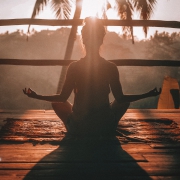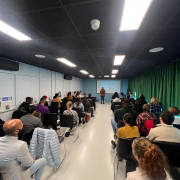Tips to Preserve Your Mental Health as a Study Abroad Student
Studying abroad is an incredibly unique experience. With it, comes many unforgettable opportunities that can be truly life-changing. Months spent in another country away from your loved ones, cultural norms, and what you’ve known your entire life inevitably leads you to grow as a person and test your limits. Honing in on your independence while you’re abroad can lead you to become a more capable person and can equip you with skills that you can use for the rest of your life. This exciting chapter of your life has countless plus sides to it. However, one thing to be aware of about studying abroad is that it can also be quite trying on your mental health.
There can seemingly be so many different things to do all at once, and so much to juggle. Looking back on my experience, there have definitely been times when my mental health has waxed and waned. If you feel the same way during your own experience, you’re not alone. It’s only natural to experience this. Here are some tips to help preserve your mental health while studying abroad.
Prepare yourself mentally beforehand
When about to undergo such an intense lifestyle change, it’s critical to mentally prepare yourself. One thing that made the move to London a bit smoother for me was that I did some research on the country you’ll be studying in and what to expect. It helped me a lot to talk to other students I know that did the same program as me or just people that have studied abroad in London. Gaining a basic understanding through conversations with those that have been through it already can help you anticipate what to expect and can help you mentally prepare for your study abroad experience.
Prioritise staying connected
A lot of what can add to poor mental health abroad is when you don’t feel as connected to your loved ones across the world. These people have been there for you your entire life, and it’s hard to come to terms with the fact that they’re so far away. One thing that has helped me is staying connected with family and friends back home. Maintaining these relationships has helped me feel less isolated and has provided a support system while I’m in London.
Engage in outside activities
I had the pleasure of living across the street from Hyde Park in South Kensington. A walk outside in the fresh air was sometimes all I needed for a mental health reset. It allowed me to connect with and take in the beauty of the city. It doesn’t necessarily have to even be a walk through a park, though. Exploring the streets of a new area of the city you study abroad in or taking up a recreational sport with locals can help you detach from the sometimes highly-stressful reality of being a study abroad student. The benefits of engaging with nature are endless and can ease the pressure of life abroad.
Studying abroad has undoubtedly been some of the best months of my life. I’ve had the privilege to be able to experience things I never thought possible. Despite the many–and I mean many–highlights of my time abroad, there have been parts of my experience that have been difficult for me mentally. Hopefully, these tips for those that are looking to study abroad are helpful. Although there will be both ups and downs, just remember that everything passes. And, make sure to take it all in while you can.
By: Maddy Adler














